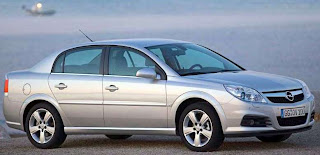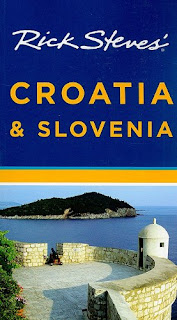
I asked the Sixt clerk directions to our hotel about 15 miles into the city. The man at the counter rattled off a sequence of rights, lefts, lights, under the pass, over the pass, first-turn comments with long Russian-sounding names sprinkled in. Petey noticed my glazed eyes and poignantly asked, “
Did you get that?” I wanted to say yes because I’m a college educated, experienced male driver … I sheepishly admitted that he lost me at the part about where to find the park

ing lot. “
Can I get a map?” I asked. He went to the back office and returned with a “Disneyland” map, the kind that has all the relevant landmarks but is not exactly drawn to scale.
We stuffed our luggage into Opel, jumped into the 4-passenger cloth seats and set sail. David rode shotgun with our Disneyland map in hand, Donna my second co-pilot kept a sharp eye on signs and Petey my third co-pilot read the Rick Steves book as we exited the airport toward the Zagreb, the Croatian capital and largest city where 1 out of 6 Croatians live. The stick-shift was fun, responsive handling, good pep. We came to our first traffic light … I stalled trying to start in third gear … sorry Opel. At that point, I had exhausted my short term memory of the clerk’s direction and turned to my three co-pilots for navigation tips. Using the Disneyland map as our main reference, we took an exit toward the direction of our hotel but we were deceived. The exit bent left and led us

in the opposite direction onto an expressway. Now keep in mind that my night vision is poor. I squinted for an exit to turn around but all I could make out were the large neon signs across the expressway telling me that I was approaching a toll gate … not that I knew what a toll gate looked like … but the red taillights of cars in front of me were piling up and we were pointed toward a one-way toll booth lane. I stopped in the road before committing to the lane. I quickly scanned the situation and put Opel in reverse as my three co-pilots were simultaneously shouted advice. I panicked. A white politja (police) car caught my eye so I reversed my reverse and entered the tool booth lane.
To the toll man I admitted my plight, “
I didn’t mean to enter the toll road; I’m lost; where is my hotel?” Though sympathetic, the man admonished me for not pulling into the parking area before getting into the pay lane. I thought, “
What parking area? It’s dark, I’m old and I didn’t see any parking area.” He gave me my two options: “
Back up, jump curb, maybe that high,” he measured with his hands about 8 inches apart, “
or go toll road 22 kilo-meters, turn round, pay toll.” On one hand, I did purchase extra insurance but poor Opel; I would hate to damage the car on day 1. On the other hand, we were US dollar rich and Kuna poor. Little did I know that the next day I would become an expert at curb jumping.
Another gruff looking toll man stepped in and got my attention. He pointed toward the toll road and barked, “
Rules!” I grabbed a toll ticket and drove ahead. We were now heading away from the city in the opposite direction of our hotel. At the critical 22 km mark I missed the turn because … I missed the turn! Petey asked with great hindsight, “
Didn’t you keep track on the odometer?”

“
I missed the turn! OK!” I replied calmly.
Now let’s say you’re driving from Visalia to Goshen? If you miss the Betty Drive exit on Hwy 99 you have to drive all the way to Traver before you can turn around to backtrack to the Betty Drive exit. That was me … I just missed Betty Drive and now I’m on my way to Karlovac … perhaps. Thirty minutes later we reach the next toll, paid to get off, turned around, drove 30 minutes back through the other toll, paid again to get off. We were right back where we started. After a few more “asking for directions” stops and we were securely tucked into our “Hotel I” beds by 24:00 Croatian time.
















































